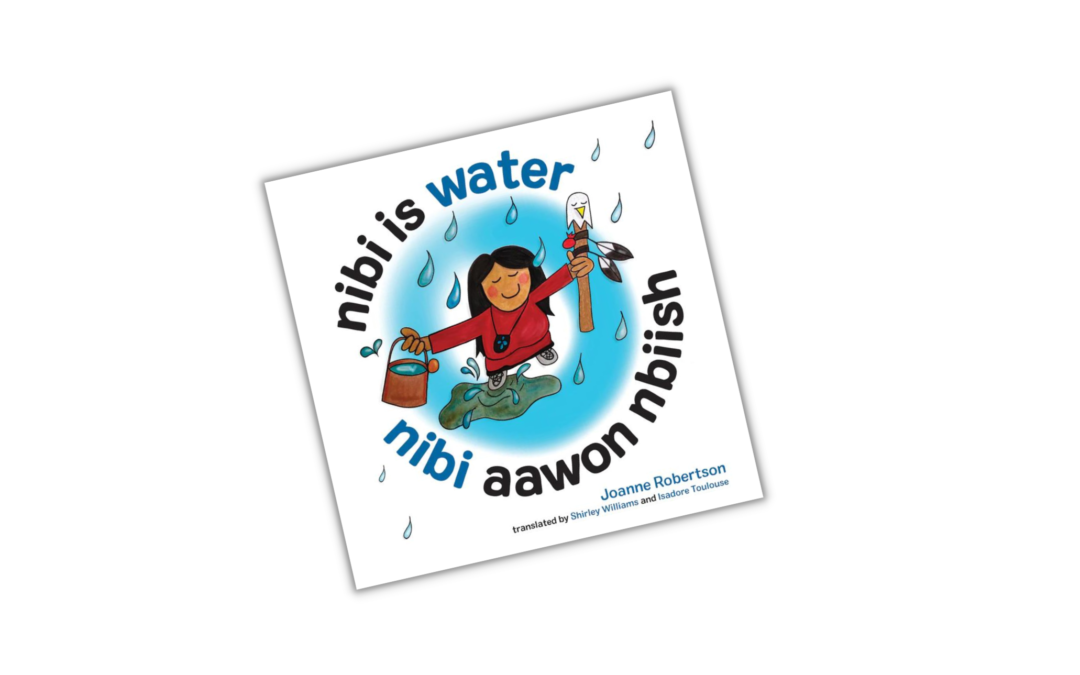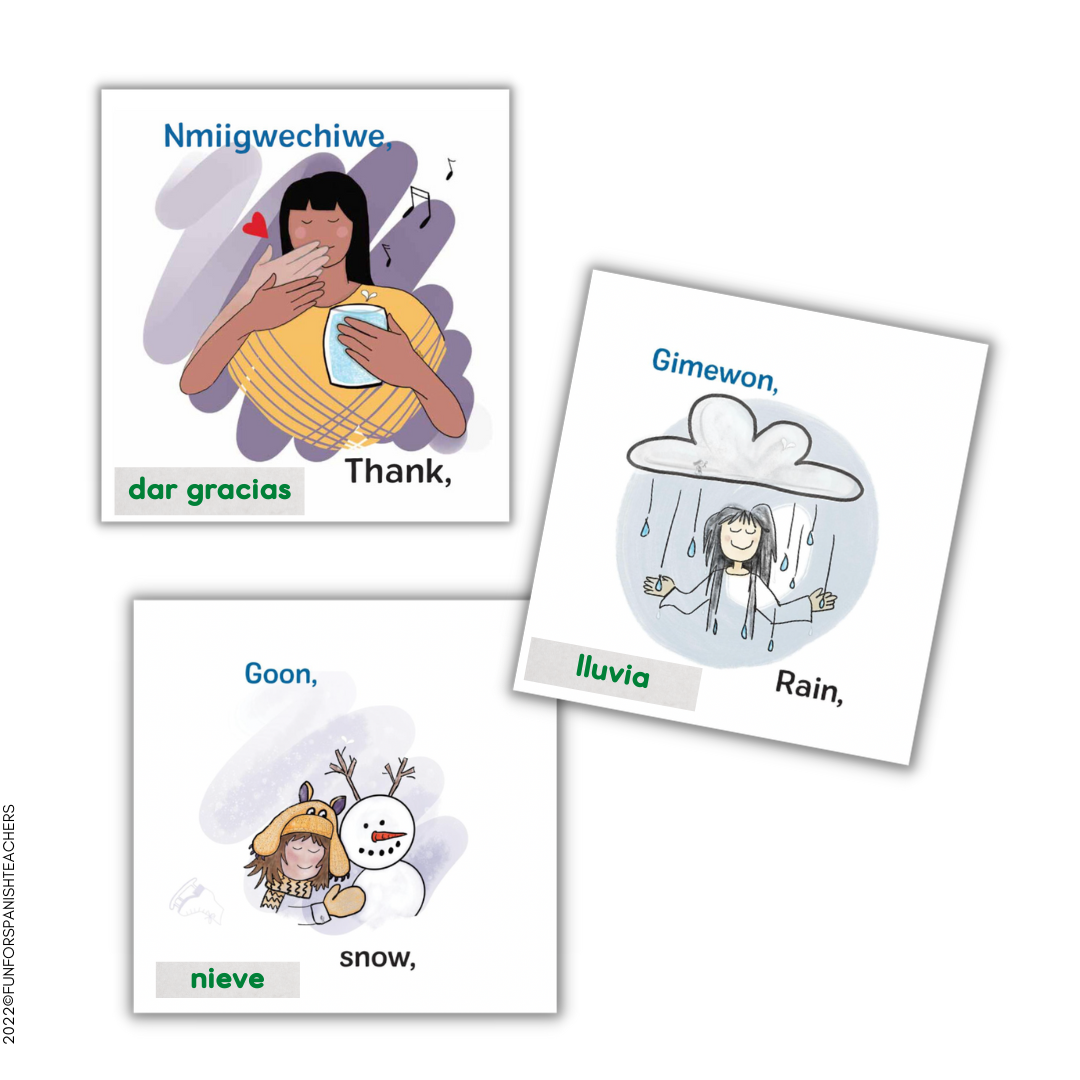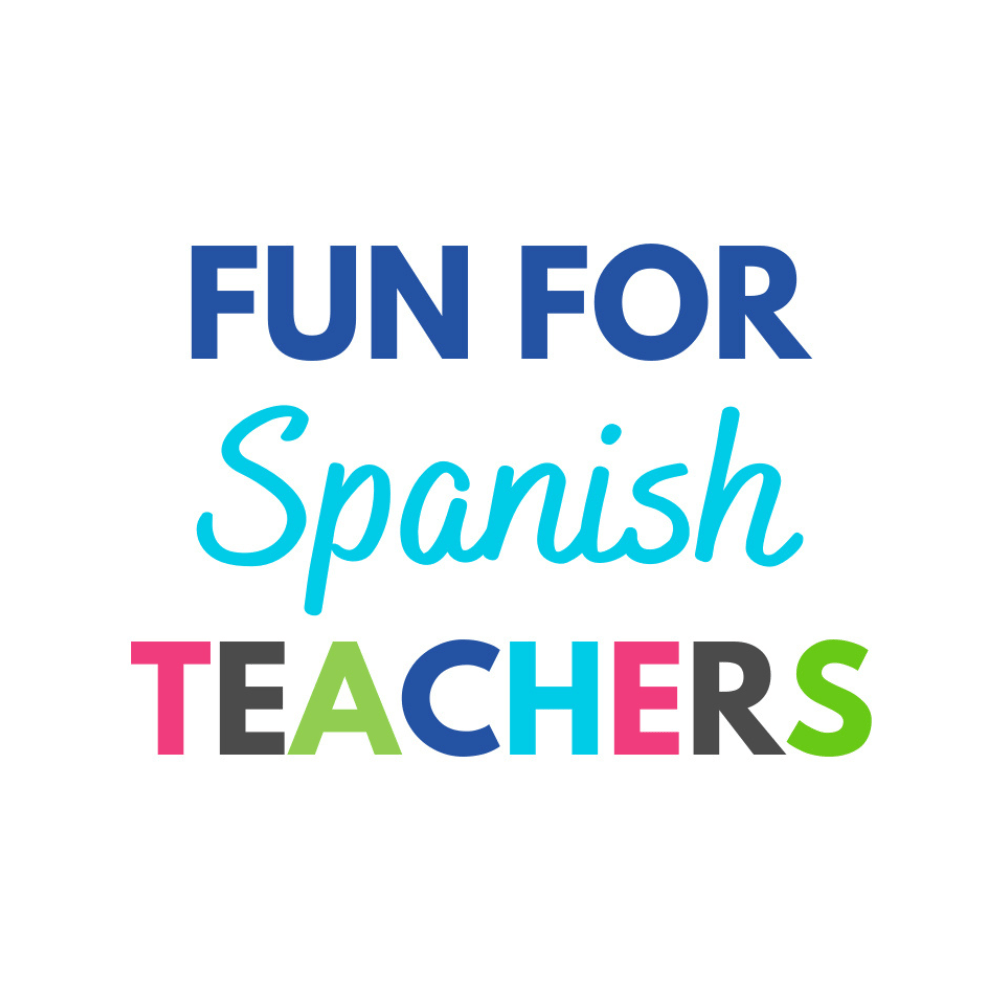
INCORPORATING THE BOOK “NIBI IS WATER” IN AN EARLY ELEMENTARY SPANISH CLASS
Nibi is Water is a beautiful picture book written and illustrated by Joanne Robertson and translated into AnishinaabeKwe by Shirley Williams and Isadore Toulouse. This book was written for babies and toddlers and is a wonderful resource for preschool and kindergarten world language classes too. By bringing this book to your classes, you are not only sharing the powerful message of protecting water and what nibi (water in AnishinaabeKwe) means for the Ojibwe but also to use it as a tool to provide authentic language input for your students. And the most important thing! Buy the book if you can to support the author. It’s also great when you can add it to your own classroom or school library.
I highly recommend that before engaging with the book to give input to your students, you give some background information about the author. I believe this short clip is great to do so. The clip is obviously in English, but it is important for students to understand why the book was written and help the author spread the message about the connection between water and her culture. Remember that world language classes should be a space not only limited to learning about the culture of the target language you are studying and learning day to day, but to connect with the world as a richly interwoven tapestry of languages, cultures, and traditions. Our classes should be a space to nurture global citizenship!
Some suggestions for using this book:
1. After watching the video with your students, read the book to provide additional context. I added the high frequency word “puedes”. For example:
Page 1: La lluvia es agua.
Page 2: La nieve es agua.
Pages 3 & 4: En el agua puedes chapotear y remar.
Pages 5 & 6: En el agua puedes nadar. Puedes tomar el agua.
Pages 7 & 8: Puedes hacer crecer las plantas o hacer encoger un suéter.
Pages 9 & 10: Con el agua te puedes bañar y cepillar.
Pages 10 & 11: Puedes lavar los platos o bajar (descargar) el baño.
Pages 12 & 13: Puedes salpicar o tomar.
Pages 14 & 15: Puedes darle agua al perro y al gato. Puedes ver al oso en el agua.
Pages 16 & 17: Puedes dar gracias y respetar.
Pages 18 & 19: Puedes dar amor y proteger.
Page 20: Nibi es agua.
Page 21: Nibi es vida. El agua es vida.
I use painter’s tape (Amazon affiliate link) to add text to any book I want to adapt and make it comprehensible for my students. This type of tape sticks to the book without damaging it if you decide to remove the tape in the future.
2. The illustrations are just amazing! Use them to talk about the different animals and colors in the book.
3. Print some pages of the book and use them like movement cards. There are some great illustrations that go well with TPR (Total Physical Response).

Enjoy this beautiful book!








